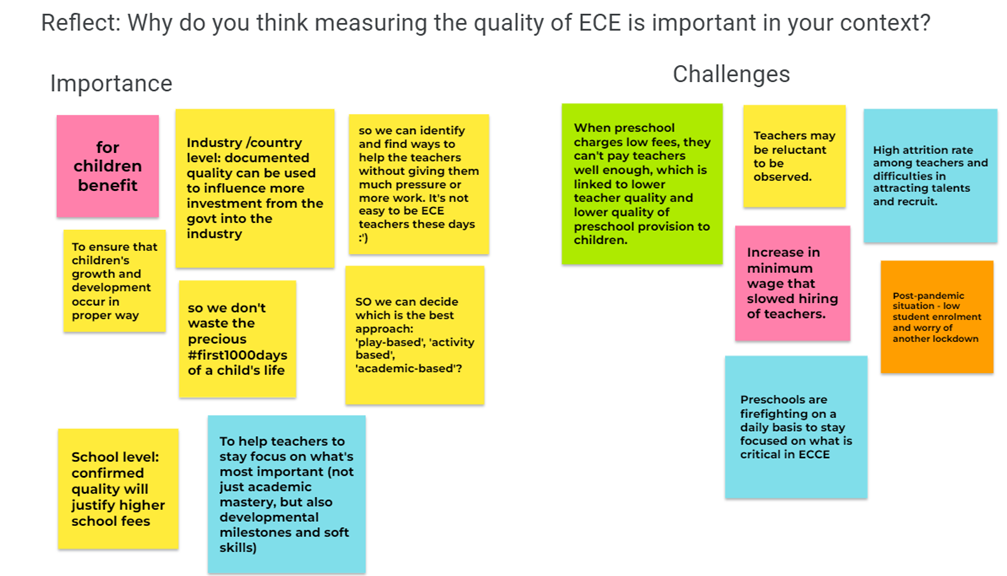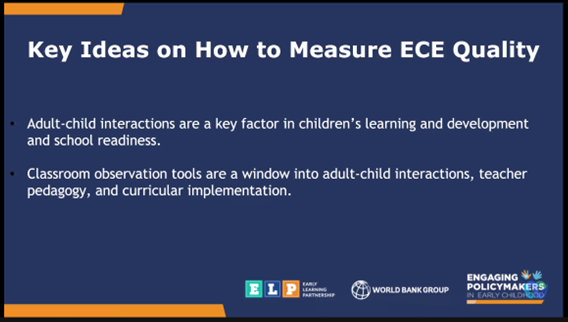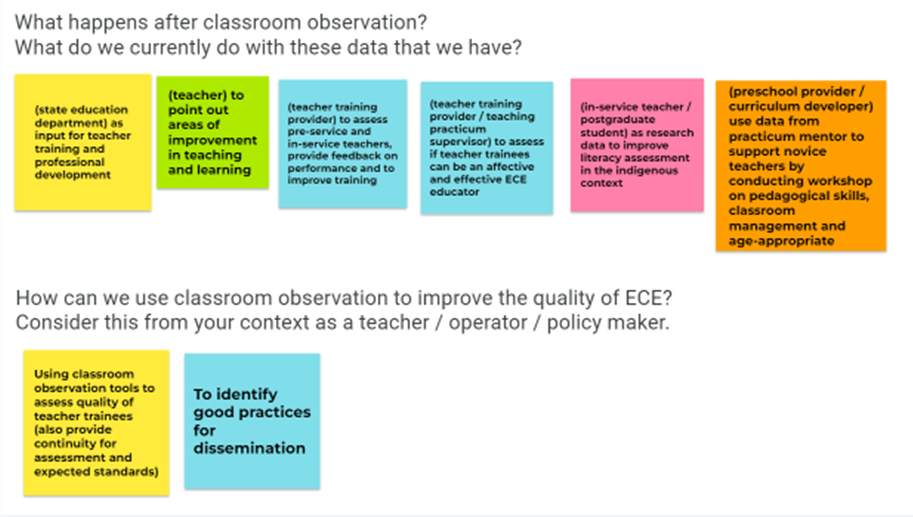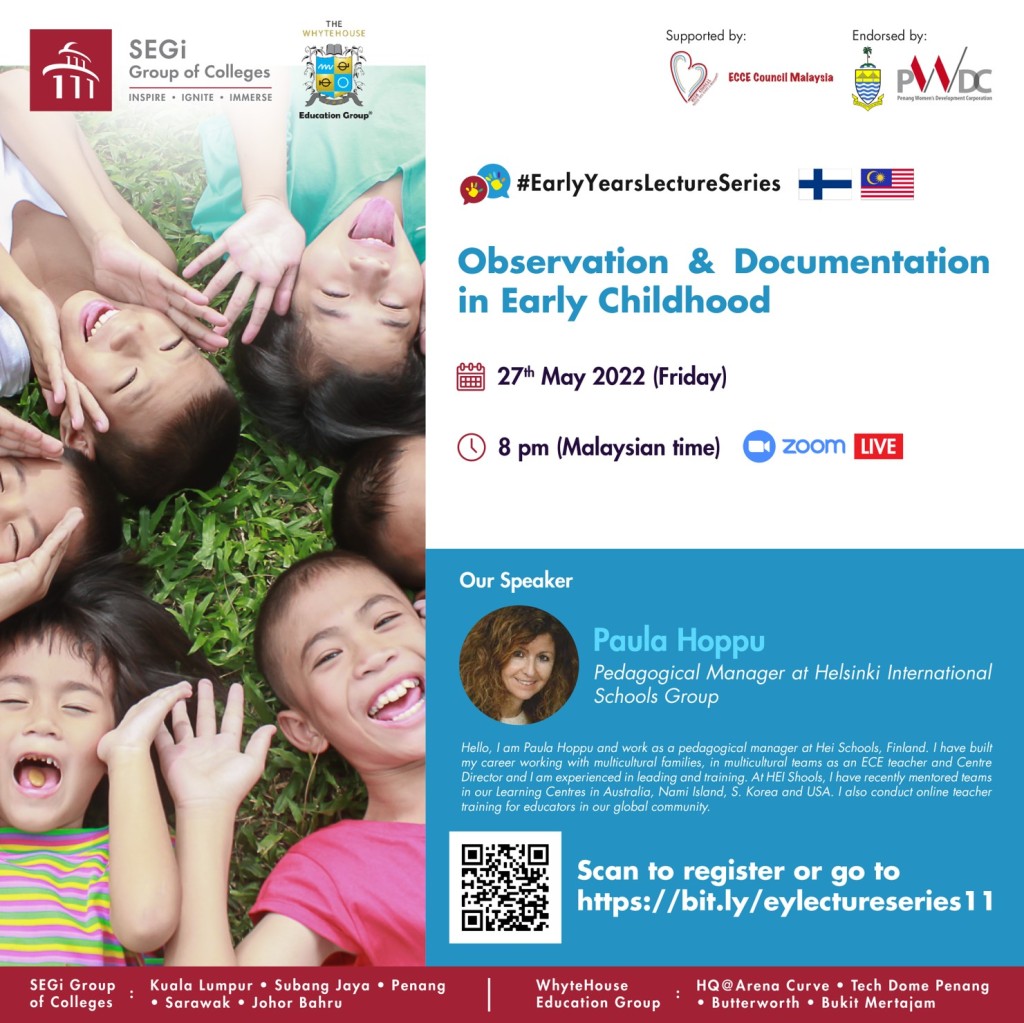In view of the importance of quality ECCE in laying the critical foundation for any successful education system, the World Bank Inclusive Growth and Sustainable Finance Hub in Malaysia organised a virtual training on Preschool Education. The session over two mornings on 18 -19 May 2022 from 9am to 11.30am had around 100 participants. I was honoured to be invited to the training.

Day 1 looked at why and how measuring ECCE quality could lead to improved outcomes. Participants agreed that while there has been emphasis on access to ECCE, there should be more focus on quality in ECCE. Participants also called for a greater national consensus on what quality ECCE would like.
Prof Nirmala Rao of Hongkong University in a video session reminded us that ECCE quality matters citing of course the neuroscience, economic and rights-based arguments. The video also covered how children had to be prepared for the changing nature of work and the technological changes to come. Prof Rao rightfully pointed out the multiple perspectives of quality and how benchmarks of quality would change over time. Structural and process quality were also covered as indicators and measurement of quality.
She also pointed out that what gets measured gets done, and policy can impact upon quality. Are we clear on the indicators of quality? Are standards in place, and communicated to all stakeholders? Have we engaged in systematic observation of preschool quality? Have we attracted, retained and supported quality teachers?
In the breakout session, my group facilitated by Maya Titelman, came up with these ideas:

Day 1 also presented a video on considerations to take into account when deciding on the measurement tools. Examples of observation tools were covered.
It was clear that once we determine the quality indicators to look out for, we would need to ensure that our measurement tool would suit its purpose, capturing the critical features. For example, if our focus was on behaviours in the classroom, classroom observation tools, self reports and portfolios may be used to focus on instruction strategies, learning environment and socio-emotional skills of the children.
Some of the key ideas on measurement include:

From the Day 1 discussions, it could be summed up that we could improve quality measurements when we ensure that:
- teachers receive constructive feedback in a timely way
- there was standardisation of tools, with flexibility to allow local context to be taken into account
- tools were user-friendly and cost effective
Day 2 of the training zoomed into ECCE classroom observation tools and we were introduced to Teach ECE, a free open-source classroom observation tool that aims to measure the quality of teacher-child interactions in ECE.
SEGi College Subang Jaya is currently studying the tool to determine its feasibility for assessing the performance of our ECCE students on practicum. It will be interesting if the tool is used for the students and later the students are assessed against the same measurements when they join the work force – this then provides continuity and align expectations for both the teachers and the schools they will be serving.
Here is the feedback gathered from my breakout room discussion:

The two day training showed the importance of quality ECCE which has always been the focus of our SGC-Whytehouse Early Years lecture series. The training which called for classroom observations and reiterated the role of the educators flowed very nicely to our May 2022 SGC-Whytehouse Early Years lecture on observation and documentation in early childhood. The session is presented by Ms Paula Hoppu of Hei Schools. Join us, and determine for yourselves what are the tools that best fit the needs of your Centre.
Register for the session at https://bit.ly/eylectureseries11
